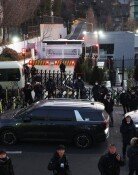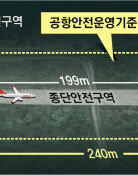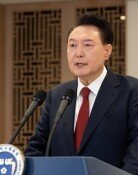Students from City and County Areas Get Increased Access to Seoul National University
Students from City and County Areas Get Increased Access to Seoul National University
Posted November. 01, 2004 23:01,
City and County Early-Decision Candidates Increase, Seoul Candidates Decrease
According to the regional equilibrium selection procedures first-step filtering, 37.4 percent and 7.5 percent of the 1,380 students who passed the first step in the Seoul National University entrance process were from city and country areas, respectively.
These numbers show, respectively, a 9.1 percent and a 3.8 percent increase from last years early decision finalists, and these rates are closer to the actual percentage of high school seniors in the areas: 40.8 percent and 7.5 percent.
An official from the Seoul National Universitys Admissions said, We expect to have students from countryside area schools that we never had before through this early decision procedure.
In reality, the procedure produced applicants from 188 new schools including 28 schools in 23 counties that never had applicants to the university last year.
The official also said, We cannot reveal the precise number, but a substantial number of them have passed the first-step procedure.
On the other hand, students from Seoul made up 23.4 percent of students selected compared to 38.2 percent in last years early decision tally. In the so-called Gangnam area, including Gangnam, Songpa, and Seocho, the number of candidates has also dropped to 3.5 percent from last years 8.9 percent, which even falls short of the actual percentage of high school seniors in the area, which is 5.1 percent.
What Is Regional Equilibrium Selection Procedure
The regional equilibrium selection procedure entails receiving three students recommended from each high school and each colleges selecting finalists in the first-step filtering process based on cumulative school records. The second-step selects finalists based on 80 percent of the students records from the first selection and manuscripts, and 20 percent based on an interview.
The number selected in the first-step procedure was 1,360 students, which is two times the selection quota of 659 students this year.
They received three candidates from each high school, and since they lowered the application requirement from second-degree CSAT scores overall last year to second-degree scores in only two subjects, there was a much-increased number of students from local areas.
An official from the Seoul National University Admissions Office said, We are still facing the final procedure, but 80 percent of the records from the first step will be reflected in the second procedure, so the percentages of final selection will not differ by a great degree.
The university plans to select 20-40 percent of its total selection quota using the regional equilibrium selection procedure, including 40 percent of humanities colleges and 30 percent of sciences colleges.
Meanings of the Equilibrium Selection Process
The new regional equilibrium selection procedure starting this year strives to relieve the lopsidedness in favor of Seoul students, especially from Gangnam, in the entrance procedure, to stimulate diversity in students selected, and also to give equal chances to students with less competent educational and socio-economic environments.
Kim Kyeong-bum of the Seoul National University Admissions Office said, We are diversifying the standards of students of excellence, adding, Even though their educational environment might be poor and their competitiveness might not meet up to the qualification requirements, we are trying to select students with potential.
The actual percentage of students from Seoul selected through early decision last year was 38.9 percent among all the finalists, which is much higher than the percentage of high school seniors in Seoul, which was 24.6 percent. Students from county areas took up only 1.6 percent. Sixty-six cites and counties produced no finalists, and this has been the case since 2000.
Ji-Won Jun podragon@donga.com






